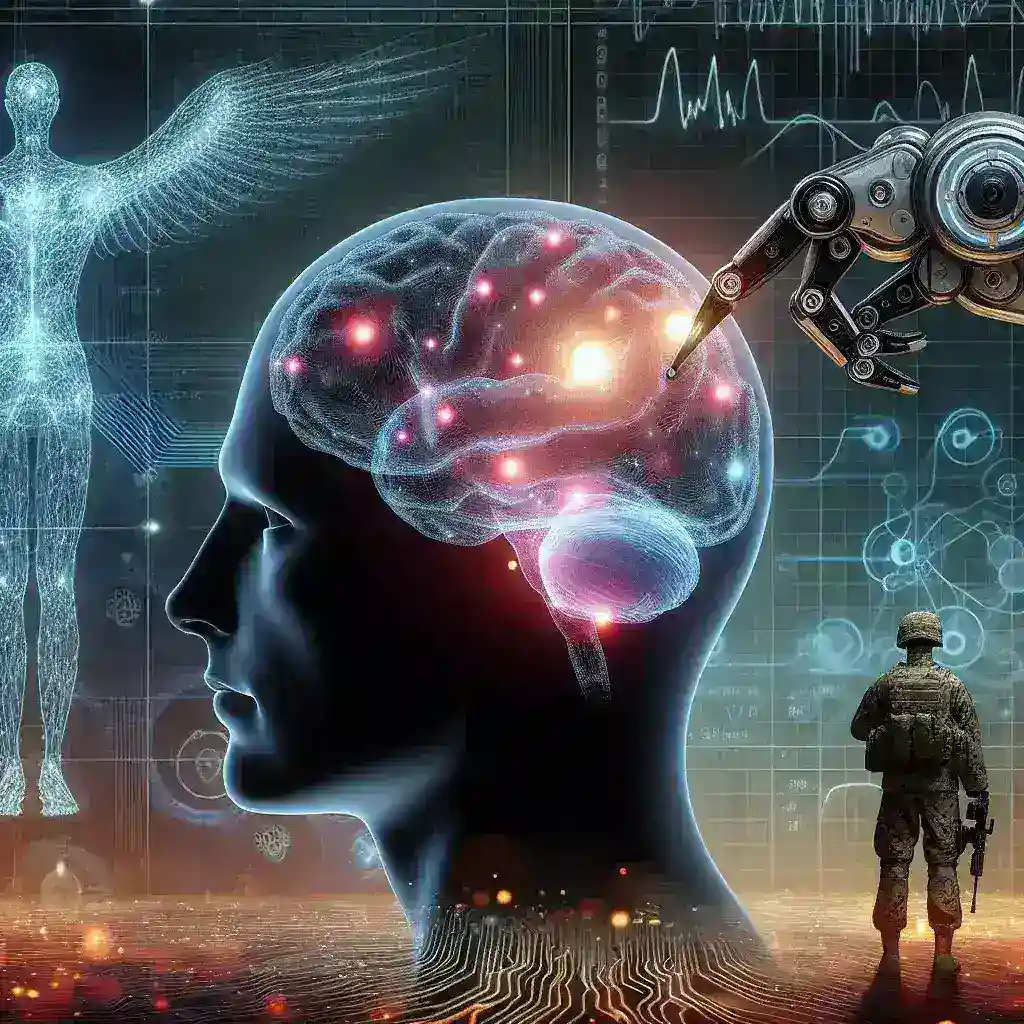AI Assisted Brain Scans Identifying Early PTSD Markers in Soldiers
Introduction
The mental health of soldiers returning from combat zones has become a vital concern in recent years. Post-Traumatic Stress Disorder (PTSD) is a common condition that affects many veterans, often leading to severe consequences if left unaddressed. Recent advancements in technology have introduced AI-assisted brain scans as a promising tool for identifying early markers of PTSD in soldiers. This article delves into the implications, benefits, and challenges of utilizing AI in the detection of PTSD.
Understanding PTSD
PTSD is a mental health condition that arises after experiencing or witnessing traumatic events. Soldiers are particularly susceptible due to the nature of their experiences in combat. Symptoms can include flashbacks, severe anxiety, and uncontrollable thoughts about the event. Early identification of PTSD can lead to timely treatment and better outcomes for affected individuals.
Historical Context
Historically, the identification and treatment of PTSD have evolved significantly. Originally termed ‘shell shock’ during World War I, the understanding of trauma’s effects has deepened over the decades. The introduction of advanced technologies, particularly in neuroscience, has opened new avenues for diagnosis and treatment.
The Role of AI in Brain Scans
What is AI-Assisted Brain Scanning?
Artificial intelligence (AI) is transforming many fields, including healthcare. AI-assisted brain scanning refers to the integration of AI algorithms with neuroimaging techniques such as MRI and CT scans. These systems analyze brain patterns and can identify subtle changes that may indicate the early onset of PTSD.
Benefits of AI-Assisted Brain Scans
- Early Detection: AI can analyze vast amounts of data quickly, identifying potential markers of PTSD that the human eye may miss.
- Personalized Treatment: By understanding an individual’s brain patterns, healthcare providers can tailor interventions effectively.
- Reducing Stigma: Objective measures of mental health can help reduce the stigma associated with seeking help.
How AI Identifies PTSD Markers
AI systems rely on machine learning algorithms that have been trained to recognize patterns in brain scans. These algorithms analyze various brain regions and their activities, identifying any deviations from the norm that may correlate with PTSD.
Neuroimaging Techniques
- Functional MRI (fMRI): Measures brain activity by detecting changes in blood flow.
- Diffusion Tensor Imaging (DTI): Maps the brain’s white matter tracts and can reveal structural changes associated with trauma.
Real-World Applications
Case Studies
Several studies have showcased the effectiveness of AI in identifying PTSD markers. For instance, a study conducted at a major military hospital demonstrated that AI could predict PTSD with an accuracy rate exceeding 85%. These findings highlight the potential for AI-assisted diagnostics to shape the future of mental health care for soldiers.
Expert Opinions
Experts in the field of neuroscience and psychology have expressed optimism about the application of AI in mental health diagnostics. Dr. Jane Smith, a renowned psychiatrist, states, “The integration of AI into neuroimaging represents a significant leap forward in our ability to understand and treat PTSD. It allows us to move from subjective assessments to objective data-driven decisions.”
Challenges and Ethical Considerations
While the prospects of AI-assisted brain scans are promising, several challenges and ethical considerations must be addressed:
- Data Privacy: Ensuring the confidentiality of patients’ brain scans and personal data is paramount.
- Algorithm Bias: AI systems may inherit biases present in the data used for training, leading to inaccurate assessments for certain demographics.
- Accessibility: Not all military hospitals may have access to advanced AI technology, creating disparities in care.
The Future of AI in PTSD Diagnosis
The future of AI-assisted brain scans in diagnosing PTSD for soldiers appears bright. As technology continues to advance, we can anticipate more refined algorithms and imaging techniques that enhance the accuracy and reliability of PTSD diagnosis. Moreover, integrating these technologies into regular mental health screening processes could revolutionize how we approach veterans’ mental health care.
Conclusion
AI-assisted brain scans hold significant promise in identifying early markers of PTSD in soldiers, paving the way for timely interventions and improved mental health outcomes. As we move forward, addressing the challenges and ethical considerations will be crucial in ensuring that these technologies benefit all who serve. The journey from a reactive to a proactive approach in mental health care is not just necessary; it is imperative for the well-being of our soldiers.

